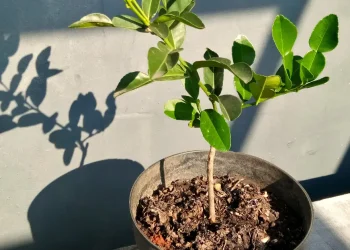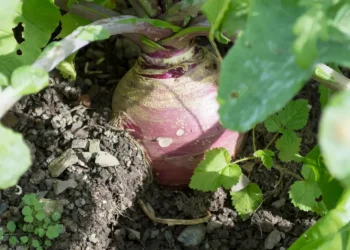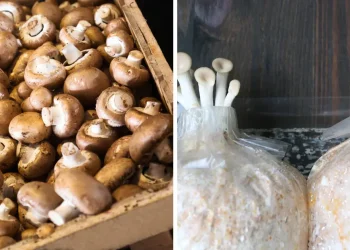Seeing how things work in practice was my favorite part of school that I fondly remember. So I am sure that the pressure is high to deliver on your promises. That’s why I created this list of the best beans to grow in the classroom.
I compiled this list with a few things in mind. Firstly, I choose beans that are fast to grow – your time is limited, right? My second parameter was to select beans that are easy to grow and maintain in not so ideal settings, like your classroom.
Near the end of this article, I also have for you an easy, step-by-step guide on how to grow those beans with just a mason jar and a few things everyone has in their household. Don’t waste any more time, and let’s jump right in!
Best Beans to Grow in Classroom
Many varieties of dried beans can thrive indoors. But if you want the fastest results with as little hassle, here are my top choices for your classroom:
1. Lima Beans
Lima Beans take roughly 18 days to germinate, which is ideal for a limited time as in the classroom. The upside is their size. Lima beans can produce one of the largest seeds. If you happen to find dried, large lima beans, your students can see the germination process up close.
2. Pinto Beans
Pinto beans are very fast to germinate in just 8 to 14 days if the moisture is right. They are also visually interesting with their irregular red stripes.
3. Mung Beans
Mung beans are excellent for demonstrating germination as they sprout only within 2 to 5 days. That’s great because you can demonstrate the effects of moisture or light by starting the germination process using different methods and can observe results within one school week.
4. Kidney Beans
Kidney beans are not among the fastest germinators (10 to 14 days), but their benefit is their accessibility. Dried kidney beans are available in almost every grocery store.
Note: In the picture above, you can see a white variety of kidney beans. Both white and red kidney beans have similar germination times.
5. Black-eyed Peas
Although called a pea, it is actually a bean. They are fast to sprout, just within 5 to 14 days.
How to Grow Beans in the Classroom Using a Jar
Growing beans in a jar is probably the easiest and most straightforward method to grow beans in a classroom. Since mason jar is fully transparent, your students can see the process from all sides. For this you’ll need:
- Glass jar or Plastic cup
- Paper towels or Cotton balls
- Spray bottle of water
- And, of course, dried beans of your choice
I’d recommend you to soak the beans overnight. You can place them in water on Sunday night and bring them to the classroom on Monday morning. It is not necessary, I’ve tried the experiment both ways, and it worked just fine. But soaking the beans really boosts the germination process, which can be really beneficial since you’re working with limited time.
Now together with your students, take the jar or plastic cup and line the inside with paper towels or cotton balls. As you go layer by layer, spray the towels with water and add several beans here and there so they are in between the towels. I would recommend a maximum of two to three beans per jar. If you are using cotton balls, wedge the bean into the cotton ball. As you spray with water, make sure the towels are damp but not soggy.
Place the jar in a sunny windowsill or a well-lit area where the beans can receive sunlight. If you want to explore germination a little further, you can place multiple jars in different places. What will happen if the bean doesn’t receive sun at all?
Over the next few days, students can observe the beans as they sprout and grow. They can use a black marker to indicate the growth each day.
A Few Tips for Success
Over the years, I collected a few tips that should aim this experiment to success.
- Make sure your students wash their hands thoroughly before “planting.” Bacteria can easily spread onto the beans, and with the increased humidity inside the jar, they can get moldy.
- To further prevent mold, make sure not to overwater the paper towels. Also, don’t get them dry out. If it’s drying out, spray it with more water.
- The jar does not necessarily need a lid, but it can speed up the process. If you don’t have a lid, you can cover it with a plastic wrap. In both cases, make sure not to close it all the way (or make holes in the plastic wrap).
Explain to Students How can Beans Grow without Soil
Your students probably know that to grow plants, you need water, air, sunlight, and soil (nutrients). The bean inside the jar gets everything it needs, but nutrients, which plants usually get from soil.
So for the curious ones, it may be helpful to point out that beans have their own nutrient storage inside the seeds, which powers their growth. These stored nutrients sustain the young bean plant until it can be transplanted into the soil. If it’s not transplanted to soil, these nutrients will run out, and your bean will die.
You can also observe with your students how long the plant will survive or how long it takes to run out of nutrients.
When to Grow Beans in the Classroom?
This experiment is best done in spring or early summer. During these seasons, natural daylight hours are longer, and the higher temperatures can also help.
But the sunlight is the biggest concern. If you live somewhere where the jar will be able to get at least a few hours of sunlight every day, it should be alright. My friend, a teacher, did this experiment with his students near the end of January, and the beans sprouted just fine.
















